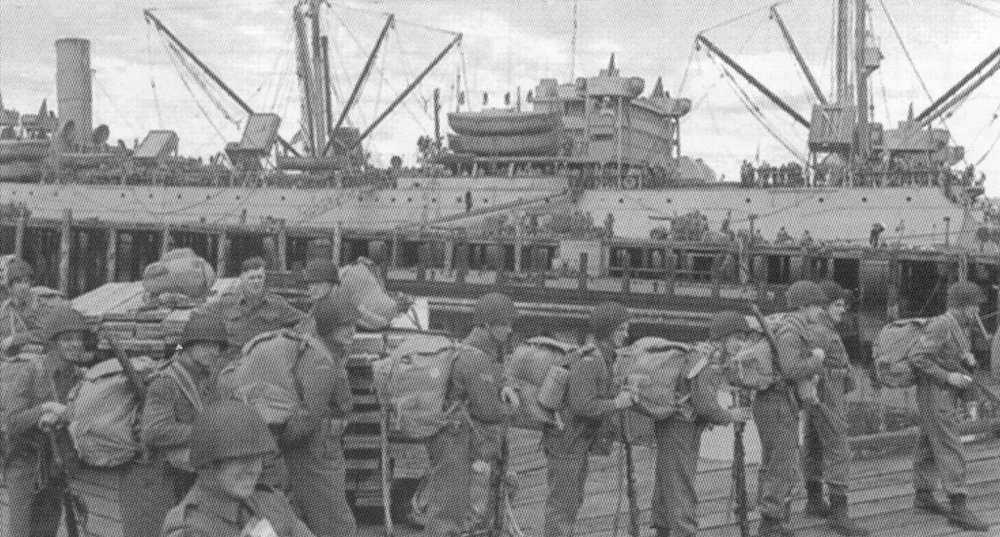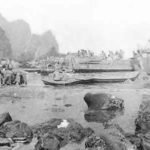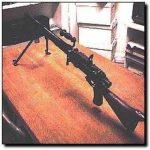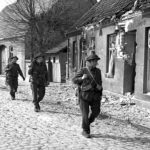Story by Rhonda Roy – Originally Published in Esprit de Corp Magazine, Volume 9 Issue 4 and Volume 9 Issue 5. Reproduced here for educational purposes.
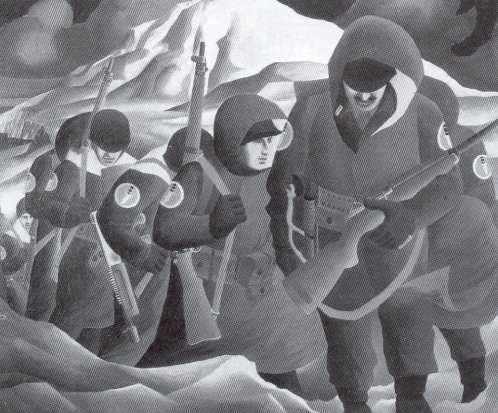
Hughes – Canadian War Museum.
Before 32-year-old Captain William Kirby stepped off the troop ship Sacajawea at Port Hardy, BC, on 12 January 1944, the Canadian artillery officer, law student and former Vancouver high school math teacher was ordered to return all of the kit he had been issued by the American military. The American assault weapons he had used, the American uniforms he had worn, and even the small 9th Amphibious Task Force insignia, a circular blue cloth patch worn on the sleeves of all Green Light Expedition members, was to be ripped off and returned. It was almost as if the Americans wanted the Canadians to depart with no evidence of the tragic embarrassment that was the Battle of Kiska.
Kiska Island is little more than a steaming, snow-covered 4000-foot volcanic mountain surrounded by a steep succession of hills. It is only five miles wide and 22 miles long, desolate, barren and uninhabited. It was certainly no military prize. Constantly engulfed in fog and continuously swept by icy ocean winds, Kiska is part of the Aleutian Island chain of Alaska and lies in the North Pacific, its north shore bordering the Bering Sea. Kiska suffers the worst sea-level weather in the world: eight clear days a year amidst an average of 250 days of rain and powerful winds and 100 days of bitter cold and dark. The mountainous volcanic terrain is treeless and covered with waist-high tundra scrub and wet, deep mosses. Despite the inhospitable climate and the swampy, useless land that gives way to impenetrable volcanic rock at higher altitudes, neither the Japanese nor the Americans could completely reject Kiska as an impractical invasion route in 1942.
Japanese interest in the Aleutians Islands rose after the bombing of Tokyo on 18 April1942. Unaware that the 16 American B-25 bombers that strafed Tokyo that day had taken off from the carrier Hornet at sea – these bombers had never before been flown from carriers -Japanese intelligence wrongly assumed the flights originated out of a secret base in the Aleutians. A month later, the Japanese sent a large fleet for the invasion of Midway Island, and a smaller fleet, more as a diversion, to attack the ‘secret’ allied bases on the Aleutian Islands of Attu and Kiska. Possession of these three islands would provide Japan with a formidable defensive perimeter in the north and central Pacific, but Midway Island would be the jewel in the crown, for Japan’s primary strategic aim was always to conquer Southeast Asia.
HUGE LOSSES AT MIDWAY
After an unbroken year of victories in the Pacific, the Japanese did not anticipate the huge losses they were to face at Midway, and this became a turning point in the war that they never recovered from. The Japanese public, uninformed of this humiliation, was instead led to celebrate their glorious ‘victory’ in the North Pacific – the acquisition of two small, unoccupied northern islands. A sorry consolation prize indeed.
However, Japanese possession of these islands dealt a significant psychological blow to North America. For the first time since the War of 1812, an enemy occupied North American soil – albeit a water-soaked, marshy soil that no one had ever heard of or cared about until now. North American response was tinged with panic as the Americans underwent the first mass airlift in their history. Within 36 hours of occupation, 2300 troops and tons of supplies and weapons were flown to Nome, Alaska. Buildup of the U.S. Army’s forces in Alaska continued until 94,000 troops were stationed there and 13 additional bases constructed, including two on the Aleutian Islands of Amchitka and Adak. Airstrips and roads built on these islands had to be covered with wire mesh to prevent vehicles and aircraft from sinking into the marshy land.
Intensive bombing attacks against Attu and Kiska were launched, and a huge naval blockade was enforced against the Japanese. The Battle of Komandorski, the last and longest daylight surface naval battle of fleet warfare, took place when a large Japanese force failed in its attempt to run this blockade. Enemy garrisons then had to rely on only the very meager supplies that could be brought in by submarine.
INITIAL PANIC
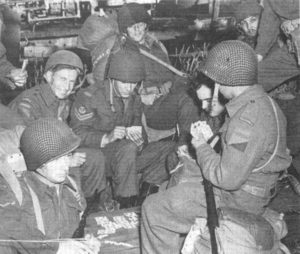
Canadian interest in the Aleutian Islands and defense of its West Coast increased after an errant Japanese submarine shelled an isolated wireless station and lighthouse at Estevan Point on Vancouver Island, 20 June 1942- the only time during the war that enemy shells fell on Canadian soil. Thirty-four thousand Canadian troops, air and naval forces were then tied up in defending British Columbia. Anti-aircraft defenses at Prince Rupert were strengthened and an armoured train patrolled the CNR line between Prince Rupert and Terrace. Three Canadian squadrons – one reconnaissance and two fighter-bombers – were also involved in the constant bombing of the Japanese at Attu and Kiska. After the initial panic subsided, however, neither American nor Canadian military planners anticipated a Japanese invasion of the mainland, and some suggested that the Japanese be left in the cold and the dark to freeze in their own juices. However, this was not to be the case.
After the bloody repatriation of Attu, the American army turned their sights to Kiska. Canadian Army Pacific Command, disappointed that they had yet had little opportunity to fight, made it clear to Washington that an invitation for Canadians to participate in the invasion of Kiska would be welcome. But first, the Canadian government would have to take special action with an order-in-council to widen the terms of “Home Defense.” Only then would the government be allowed to send 5000 Canadian troops, many of who were conscripts not to be employed outside the country except on a voluntary basis, to Adak for a month of combat training with the Americans.
When Captain Kirby boarded one of four U.S. transport ships waiting for Canadian soldiers in the ports of Nanaimo and Chemainus,12 July 1943, the exact mission of the troops remained an ill-kept secret. Rumours were rife that the inevitable destination of these Canadian soldiers after Adak was Kiska Island, where 10,000 or more elite and bloodthirsty Japanese soldiers awaited the Allied invasion. Many of these Canadian troops, now caught up in the hastily revised terms of Canadian home defense, were reluctant conscripts who had never volunteered for overseas duty. They now found themselves departing to train for action in one of the most hostile environments in the world. The expected casualty rate for Canadian soldiers, who would arrive on Kiska on the second day of battle, was 1800 men. When the ships pulled out of harbour that day, 165 Canadian soldiers were absent without leave.
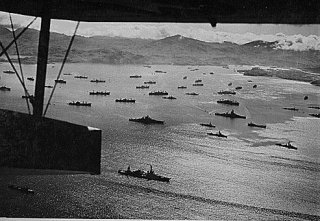
As the Canadians at Adak accustomed themselves to the harsh environment and received extensive training in battle drill, patrolling tactics, weaponry, hill climbing and amphibious assault, more than 30,000 American troops boarded heavily armed ships in California and began steaming west for what was officially still a secret mission. The success of the mission, they were told, would depend largely on the element of surprise. The men on the ships played pinochle and endless card games, told stories and wrote to sweethearts and wives as they made preparations for battle. Rumours circulated that they were bound for enemy-occupied Burma or the Japanese island of Hokkaido or maybe the Aleutian Islands. The ships made a sudden turn to the north. Any doubts about their destination were dispelled. Tokyo Rose interrupted the sweet warblings of the Andrews Sisters on shortwave radio. “All you boys headed for Kiska Island,” she warned, “are in for a big surprise.” She then listed their unit names, location and numbers, as well as the size of their assembling fleet at Adak, and informed the men of the exact time and date of their secret invasion.
All North American news media were now focussed on Kiska. Everyone knew the cost of victory would be very high. The army was expecting heavy casualties based on their recent experience at Attu, where 2400 Japanese attacked in suicidal banzai charges for more than two weeks. For every 100 Japanese killed on Attu, 71 Allied soldiers were killed or injured. Only 24 Japanese were left alive at the end. The estimated casualty rate expected for American soldiers at Kiska was 90 per cent. Sleep aboard the ships became impossible for the soldiers, and nerves were taut as the men steamed closer to what could only be a suicide mission for most.
THE LANDING ON KISKA
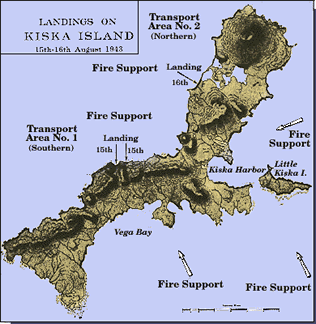
landed in the Northwest end of the island on the 16th of August. US Navy Diagram.
The invasion of Kiska was to be the inaugural exercise of the First Special Service Force, which included 700 Canadians among their ranks. These elite Canadian soldiers and hardened American warriors, many of the Americans had just been released from stockades, would later become infamous during the Italian campaign and earn the nickname “the Devil’s Brigade.” They were the first to land on the beaches of Kiska in the early hours of 15 August 1943. Their mission was to neutralize the Japanese forces before the infantry arrived.
But the timing of the landing was off. The navy had gotten poor information on the tides, which were unfortunately out, and the ships approached the island only to scrape up against a rising garden of volcanic rock. Army officers cursed their navy comrades through megaphones as soldiers struggled to climb off boats and down nets into the crowded landing craft bobbing on the choppy seas below. A traffic jam ensued and the boats began to back up. Soon the tiny cove selected for landing was snarled with dozens of boats that could not reach the crowded beach. Amid much shouting and cursing, the boats landed slowly, one at a time, in heavy fog, and soldiers waded ashore to the black muck of the beach. Mountain-trained troops were second ashore. They climbed the steep and craggy slopes up from the beach, backpacking all their equipment and support material and cutting stairs into the rock behind them for the troops that would follow.
It was a typical Aleutian day; dense pea soup like fog covered the island, punctuated only by periods of high winds and cold, heavy rain. Despite the bitter weather, soldiers were prevented from erecting tents or shelters that first night by the constant movement of their positions, as they filled in gaps for missing battalions that would not show up now until the next day. Some soldiers did manage to dig shallow foxholes into the windswept rock and root-gnarled tundra, but these provided little protection against exposure. With nightfall came more rain and an icy blanket of thick fog. Gunfire rang out and soldiers dove into foxholes already filled with water. They shivered through the night consumed by fear and dread as the firing erupted wildly around them; listening to the return fire and the inevitable counter-attack. Tracer bullets whistled overhead, machine guns rattled constantly and loud artillery fire boomed from out of the mists. Shells from supporting warships steadily exploded in the distance, and sometimes too close at hand.
As the sun rose and the troops climbed to higher ground, the weather did not improve. The fog was still thick and the winds relentless; visibility ranged from pure blindness to blurred confusion and images wavered like reflections in water. Voices echoed and died and rose again. Orders and warnings were swept away by the constant winds only to return as whispers and vague rumours of helmeted shapes with Oriental faces flitting through the fog, and the always-unconfirmed exchanges of gunfire. Veterans of the Aleutian campaign refer to the conditions caused by the local weather as the ‘Optical Aleutian,’ in deference to the strange optical illusions created by the thick fog and constant winds. Volcanic rock piles and armed enemy soldiers quivered and rippled in the drifting mists, indistinguishable from one another.
Veteran soldiers who had witnessed the carnage at Attu knew their enemy well, and the assault on Kiska became eerily familiar to them. This time the unopposed beach landings could not lure them into any false sense of complacency. The deadly silence of an invisible enemy was only a trick to lure careless soldiers up from the beaches to higher ground and present themselves for easy slaughter. Japanese soldiers lurked in every dark cave and behind every rock, poised like rattlesnakes in their fortified holes, ready to fight to their death. Many soldiers new to battle, aware of the bloody fighting that had occurred only a month ago at Attu, fought to resist firing every bit of ammunition they had into the fog – they knew the Japanese were waiting for them out there somewhere.
The Battle of Kiska raged for two nerve-wracking days as the Allied soldiers slowly and awkwardly gained ground in the difficult mountainous terrain. Radio communication was poor, maps were inaccurate and company leaders were unsure how to proceed as the enemy continued its unabashed retreat. Messengers circulated among the platoons with word of the casualties, the wounded, and the abandoned enemy bunkers that had been found up ahead, food and tea still hot on the tables. Exhausted soldiers put themselves as deep as they could into their water-filled trenches at night. But there was no sleep for the weary: American soldiers who had let down their guard at Attu had been found bayonetted to death in their sleeping bags.
When the fighting was finally over (17August 1943), exhausted Allied troops pulled themselves out of their dank foxholes, dazed and wet, to look around them and count up the casualties. As Tokyo Rose had warned them, they were in for a dreadful surprise. There were 28 dead American soldiers, four dead Canadians, and over 50 wounded Allied soldiers. There were no Japanese. Americans and Canadians had only been shooting each other.
THE ENEMY HAD SLIPPED AWAY
The Japanese were long gone before the Allies arrived. There had been some dispute among Japanese commanders regarding the rescue of their trapped garrison. Some officers felt that rescue would be a dishonour to the dead soldiers of Attu and that the soldiers at Kiska should also be left to fight to an honourable death. But in the end, rescue was approved. Eight hundred and thirty Japanese were first brought out by submarine, three of which were sunk by the Allies. The escape of the rest of the garrison through the ‘impenetrable’ Allied naval blockade (really a triple blockade of seaplanes, submarines and coastal torpedo boats escorted by destroyers), had been a daring and brilliant feat.
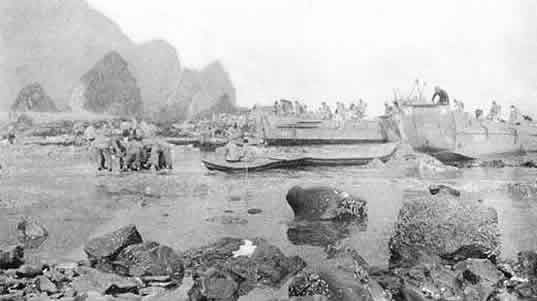
The surrounded garrison ceaselessly monitored the blockade with the first radar the Japanese had ever seen, acquired from a sunken British battleship, until they found a small window of opportunity in the Allies’ seamless ring of ships. Several previous rescue attempts had been aborted but now, uncoded messages were intercepted that revealed a large segment of Allied ships, eager for action of any sort, had left the blockade under orders to chase after a few radar blips that came to nothing. But they were gone from the blockade long enough on 28 July 1943, in what is now derisively referred to as the “Battle of Pips,” to allow two light cruisers and eight or nine destroyers to slip into Kiska Harbour under the usual cover of thick fog. The Japanese had nine hours while the Allied ships were refueling and rearming to carry out the rescue. The approach and departure from Kiska Harbour would take eight hours. This allowed only an hour to evacuate 5200 Japanese soldiers.
The Japanese rescue fleet replaced their usual cargo of seaplanes and torpedoes with 20 landing craft. This, combined with 19 boats berthed at Kiska, made a formidable rescue armada. The evacuation was completed in just 55 minutes as the soldiers flung their rifles and bayonets into the sea and climbed up the cargo nets strung along the ship’s sides. All landing craft was scuttled behind them and, along with the rope ladders and weaponry, sent to the bottom of Kiska Harbour. Nothing much was left behind except for one dog, one recent corpse dead of natural causes, a litter of landmines and booby traps, and some bombs preset to blow at the rate of one a day. The Japanese apparently had received little notice of their impending rescue as, when William Kirby surveyed their abandoned huts later during infantry patrols, unfinished meals were still upon the tables.
The Japanese paused briefly during the evacuation at a pre-arranged signal – the explosion that signified the destruction of the radar installation – to pray for the 2638 Japanese that had perished at Attu and the 2500 men that had died on and around Kiska Island during the occupation. The Japanese had never intended to invade North America from these Aleutian Islands, but their 14-month occupation had been a successful strategic move in diverting valuable Allied resources from fronts where the war truly raged.
Early Allied intelligence had been aware of the probable evacuation of Kiska. Japanese radio was off the air three weeks before the planned invasion. American bombers flying over the island had not received a single round of anti-aircraft fire since then, and pilots had even landed on the bombed-out runways of Kiska to confirm suspicions that the Japanese were gone. All of this information was reported to superiors. However, the Commander of North Pacific Force, Rear-Admiral Thomas Kinkaid, had no intentions of shutting down what was then the largest amphibious assault of the wat He ordered the invasion to go ahead anyway, claiming that the whole exercise would be a “super dress rehearsal, good for training purposes.” Reconnaissance of the island by scouting parties, routine before any invasion, was cancelled.
Many spent and shaken Allied soldiers wandered aimlessly about after this “super dress rehearsal” accepting the hard truth as the casualty reports trickled in. Some felt a sense of relief that their suicide mission against the Japanese had been averted; others felt let down that they had seen no real action after all their rigorous training and preparation. Many soldiers were grievous and sickened that they had participated in such an unnecessary charade; skulking about the thick muck of this miserable island for two days killing only their own. It was the Battle of Kiska that would lead Time magazine to create the acronym, JANFU (joint army-navy foul-up) to complement the earlier SNAFU (situation normal, all fouled-up). Never before had such a colossal amount of weapons, ammunition, manpower and equipment been thrown into a battle without an enemy.
Many were the ways to die on Kiska. Before the last of the Allied troops departed, more than 300 casualties would be recorded. There were those who had been killed by the so-called friendly fire of their confused and scared comrades; others by mines and the timed bombs left by the Japanese; accidental ammunition detonations; vehicle accidents; unexploded bombs in the tundra; and insidious booby trap explosions. In one incident, 71 navy men were killed and 47 wounded when a destroyer struck an off-harbour mine. Many soldiers became diseased and sick, suffering non-battle injuries and exposure. Trench foot was the most common affliction.
MANY STAYED BACK
Most troops were evacuated from the island soon after the ‘invasion’ was over. Captain William Kirby and the Canadian Green Light Force stayed behind for almost four months to endure the bitter Aleutian winter, expanding and completing air facilities and base construction, and building roads and piers in anticipation of future action against the Japanese. When Kiska was finally abandoned, Kirby left for Pacific Command at Vancouver, to continue his military career as Command Legal Officer.
If there are any other surviving members of the Green Light Force, Kirby lost contact with them many years ago. He remembers Kiska as a land that he came to respect and admire, a place that he now describes as “very austere in its beauty.” For Kiska was not always fog-bound, windswept, dark, wet and ominous. There were those rare occasions when the mists would lift briefly, just long enough to reveal sudden breathtaking scenes of pure beauty – all dominated by one perfectly shaped, cloud-cushioned and steaming volcano. The glossy greens of the tundra, unusual ferns, and rare alpine flowers would all be on display in brilliant bands of sunlight, surrounded by endless blue seas. And then the curtain of fog would close.
Kirby returned most of his kit as ordered, but did leave the ship with a few items he considered personal. This unique collection of mementos, kit items and photographs may be the only evidence left of Canada’s participation in the ignominious Battle of Kiska. He has donated this collection to the Ashton Armoury Museum in Victoria, BC, where it is on display. William Kirby, a retired Judge, resides in Sidney, BC.
